Chinese paper cutting art is one of the most representative art forms, most widely used by the people, with the richest historical cultural understanding and distinct characteristics varying from region to region.
Although its material - paper, was invented only 2,000 years ago, the culture and connotation and art form of cutout paper is the historical-cultural sediment of Chinese nation from 6,000 or 7,000 years ago from the primitive society to nowadays.
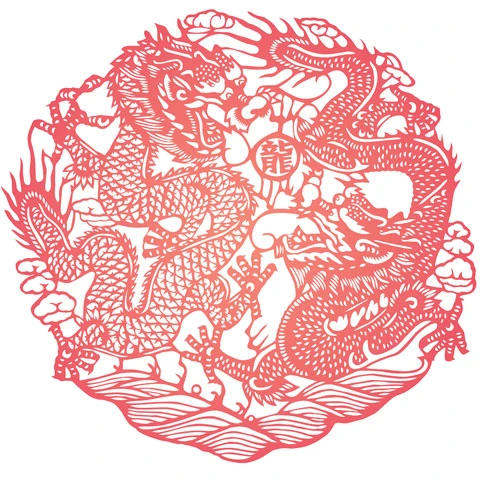
Therefore, its cultural value far exceeds the Chinese paper cutting art itself, and has rich connotations of philosophy, aesthetics, archeology, history, ethnology, sociology, and anthropology, which represents a complete system of original Chinese art, modeling system, and color system.
The Chinese paper cutting is the carrier of the original Chinese philosophy, it is represented in popular culture.

Types of Chinese paper cutting art
There are many kinds of Chinese paper cutting art:
- for decorations, such as cut-out papers of windows, Kang, cave-house roof, etc.,
- for life utensils, such as cut-out papers of pottery, cylinder, etc.,
- for dress, there are embroidery, flowers of cap, shoes, pillows, etc.,
- for the holidays, there are "bowl with lid" which implies the combination of earth and sky, the propagation of descendants, and the harvest;
- for the first day of the Chinese Lunar New Year, "spring ox door gods" attached to the door;
- in the wedding, there are cut-out papers such as "Yin and Yang fish", "fish bites lotuses", "giving birth in lotuses";
- at the funeral ceremony, there are cut-out papers "tree of life" which means the spirit will never die and life will not stop forever;
- for the day of the dead, the cut-out paper "Fo Tuo" placed on the grave (Man minority).
The Chinese nation which believed in the brilliant ancient civilization, nowadays still keeps the rich and ancient historical-cultural heritage in the folk cutout paper and folk custom and art.
Unique historical significance
Chinese paper cutting art is a living fossil of history, such as the archaeological culture of primitive society unearthed in the same area and historical documents and ancient legends.
For example, the Miao ethnic group of the Yangtze River regions which is one of the three great tribes of ancient China, developed northward 4,500 years ago, had war with the Huaxia tribe group of the Yellow River, after the defeat, the Miaoman group migrated to the southwest enclosed area, and became the Miao and Yao minority nation.
In the Miao ethnic group, there are no letters or characters. Their ancient history is transmitted orally without historical documents. However, the dress and ornament and paper cutting of the Miao ethnic group that is still preserved to this day is a complete ancient history of Miao.
This concretely describes the myths and legends of the birth of the Miao ethnic group and its migration battle history.
And the embroidery patterns of dress and ornament that are still popular in the Yellow River regions are a history of totem culture and ancient totem worship from animal images, semi-animal and semi-human images to legendary human images.
The philosophical significance
The Chinese folk paper cutting art represents a complete system of philosophy and art, the basis of which is not Confucian philosophy but the original Chinese philosophy system.
It coincides with the images of prehistoric colorful pottery unearthed, so it can be inferred that in the prehistoric culture there was a complete prehistoric philosophical system that we do not know yet.
Thus, the symbols of colored pottery of the prehistoric culture without knowing how to speak can be explained accordingly.
For example, the Yangshao Culture colorful pottery symbol "a pair of fish with human face" with 6,000 years in the popular cut-out papers, are not natural fish, but cultural signs representing the prehistoric philosopher concept. In the spring festival and wedding ceremony, the paper cutout "bowl with lid" is not the real bowl, but a philosopher symbol.
The characteristic of overcoming time-space of the paper cutting modeling, the essential concept that the two eyes appear on one side only, and the hemispherical dome concept that the round line represents the bowl mouth, and the straight line represents the bowl base of the bowl, all these are the art form of the original Chinese philosophy.
The diverse styles of Chinese paper cutting art
China has a vast territory and multiple nations, so the characteristic of the region and nation of paper cutting is very distinctive.
- From an artistic style point of view, the northern paper cutting is very simple, unadorned and at will; while the southern paper cutting is refined, elegant, and full of joy.
- From the point of view of the creators of paper cutting, many peasant women cut out papers with scissors, whose representative forms of art are concept structure, concept modeling, and concept color of super-time and space. The artists who are mostly men use more realistic style.
- From the point of view of the application of social life, the paper cutting being samples of the embroidery of the dress, emphasize the decorative style of the composition, the simple outline, and the unadorned inner part, such as the Han Dynasty stone painting; being window flowers, because of the need for brightness, in the inner part are highly decorated, especially the paper cutting of windows of Jiaodong areas of Shandong, the threads of the ornaments of the inner part are like silk, they are very impressive to us.
In addition, in the general style of folk paper cutting, the representative authors have their own special characteristics and creation.
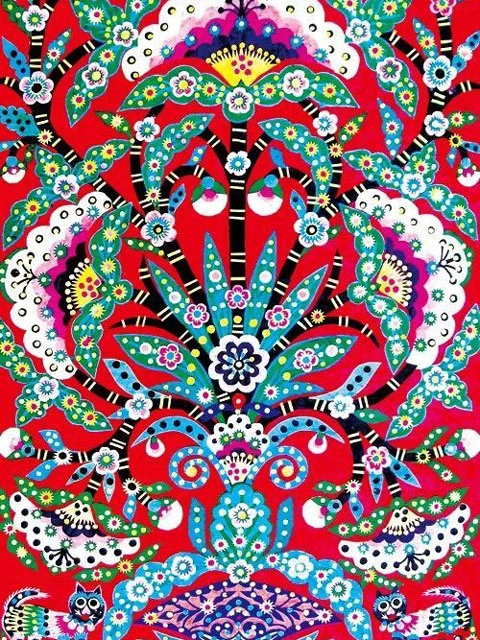
Ku Shulan's paper cutting works
For example, Ku Shulan woman from Xunyi of Shaanxi, Shaanxi, made the wonderful colorful paper cutting with multi-levels; folk artist Wang Laoshang from Wei village of Hebei created dyed and sculpted characters in rice paper.
After 2,000 years of development and inheritance, by means of easier and more primitive scissors, needle, and hemp paper, women have created paper cutting, which is a representative form of art with special characteristics.

Wang Laoshang's paper-cutting works
The primitive nature of the tools, special representation, and the group of creators and wide use in life, all this decides their special value.
In remote and paper-scarce mountainous areas, peasant women cut out more expressive works of art with scissors. These scissors is the tool of creation to realize the art activities through folklife such as festivals, offering ceremonies, weddings, etc.
In Astana tomb of Turpan of Xinjiang, five cut papers of the 5th century, the period of South and North dynasties (420-589), which are a pair of monkeys, bees, butterflies, deer, and geometric images of rotating flowers are unearthed. 1,500 years later, such cut-out papers are still popular along the silk road in Gansu and Shaanxi.
The cut-out papers of seven "babies with rolled hair" hand by hand unearthed in the Tang Dynasty tomb in Astana, Turpan of Xinjiang, were placed on top of the paper with the figure of the owner of this tomb.
The figure made of paper was used to represent the body of the general (the owner of the tomb) in battle. It is obvious to see that it means the revival of the spirit.
Folk paper cutting serves to define the cultural characteristics of each minority nation and each region, this function is also served by the embroidery cutout paper samples of the dress and ornament of each minority nation of China.
The paper cutting of the Miao ethnic group records a story that after becoming the mother butterfly, the ancestor of the totem of the Miao ethnic group, the maple tree married the foam in the water, and gave birth to Jiangyang and Leigong, and animals such as dragon, tigers, snakes, elephants, buffaloes, centipedes, etc., and later, after a flood, Jiangyang married his brother Leigong, and they reproduced as humans.
Xinjiang Uygur national minority embroidery paper cutting images, is the tree of life and the sun, pitcher, bottle, and variants of geometric images of the tree of life.
The samples of paper cut out from embroidery on shoes, hats and dudou from the area where the Qiang Culture of Guanzhong of Shaanxi was born, consist of images of tiger totem pillows, tiger head shoes, tiger head dudou and vest of the tiger defeating the five poisonous insects, etc.
Different forms of paper cutting art skills
The artistic skills displayed by the Chinese paper cutting arts also have various forms.
The northern countryside is relatively closed, under the ancient state self-sufficient peasant economy, there women cut out papers with scissors and hemp paper without drawing any project, they make them the way they want.
In the areas of the Yangtze River and the southwest coast, due to the development of the capitalist commodity economy of the Southern Song period, there appeared artists and artistic masters of paper cutting who were mostly men.
They adapted to the new folk life, market system and the need for cultural and aesthetic concepts, formed the multi-layered art style of paper sculptures and excellent painting skill. Among them, they created works such as images of mountains and water, kiosks, gardens, characters, flowers, animals that look alive as if they were real. This style is totally different from that of the northern country women.
Among the large-scale paper cutting depending on folklife, there are dragon foral papers for festivals, cut-out papers for wedding ceremonies, for exorcist dances, for offering to ancestors in the Miao minority nation, and so on.

Many countries have cut-out papers made by professional artists, but folk paper cutting is relatively rare; however, they are still preserved in China. The art of folk paper cutting is one of the most important cultural heritages that need to be protected and inherited.
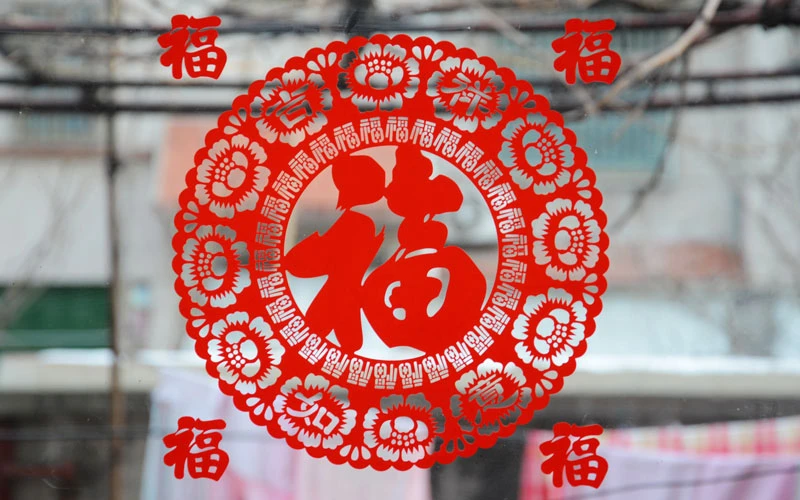
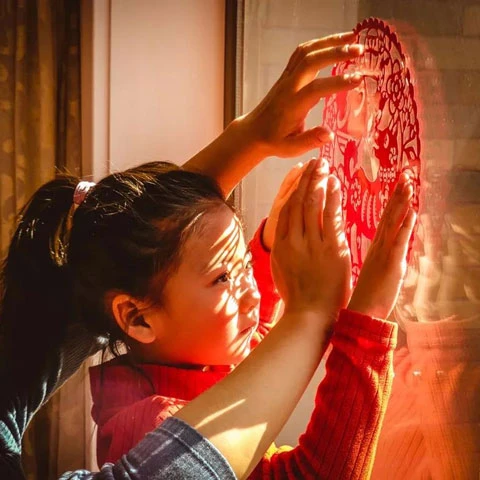

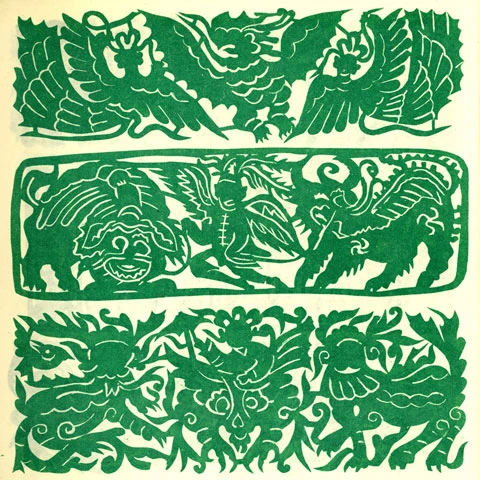

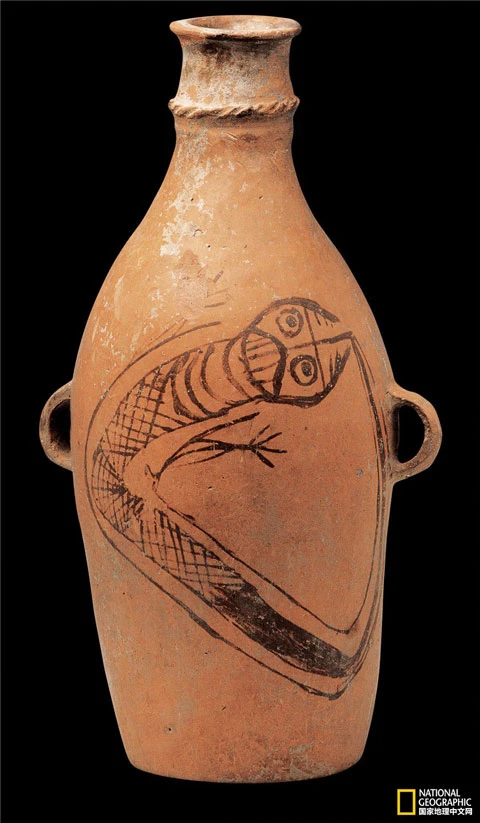

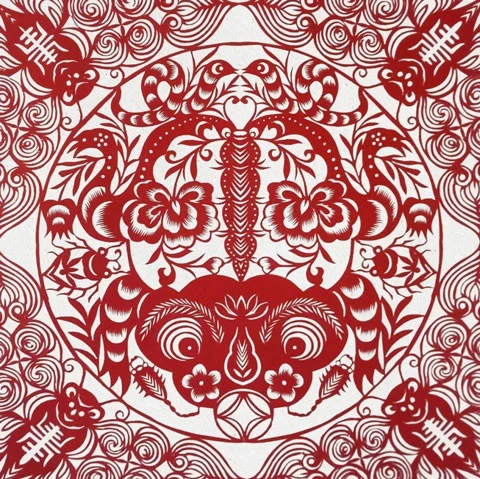

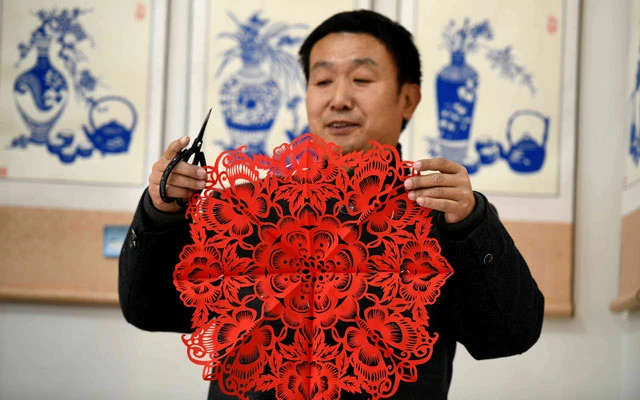

I loved doing this during the winter hollidays, to prepare for the Lunar New Year!
Mengagumkan